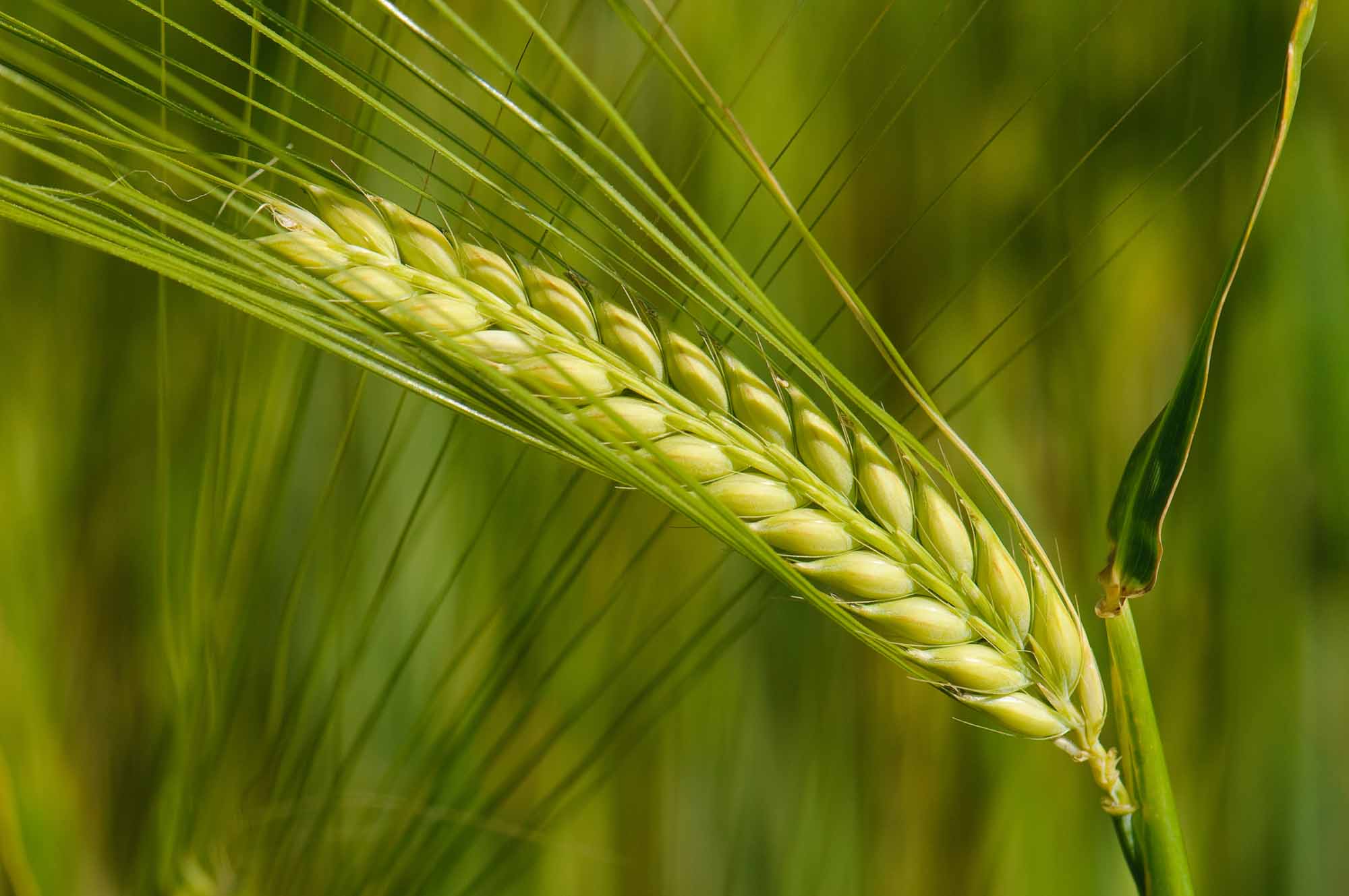Browse "Agriculture"
-
Article
Agriculture in Canada
Agriculture is the practice of growing crops and rearing animals mainly for food. Farmers also produce other items such as wool from sheep and CBD oil from hemp plants. In Canada, agriculture is an important industry. Only about 7 per cent of Canada’s land can be farmed. Other marginal (poorer) land can be used to ranch cattle. Aquaculture operations are found on the East and West Coasts and in the Great Lakes. Some crops such as tomatoes, cannabis and flowers are grown in greenhouses in urban centres. Canadian agriculture faces many challenges. Some of these challenges concern crop protection, soil conservation, labour, climate change and health. Click here for definitions of key terms used in this article. This is the full-length entry about agriculture in Canada. For a plain-language summary, please see Agriculture in Canada (Plain-Language Summary).
"https://d2ttikhf7xbzbs.cloudfront.net/media/media/dc2050ae-b79f-4f42-9cb0-d37a157abffa.jpg" // resources/views/front/categories/view.blade.php
https://d2ttikhf7xbzbs.cloudfront.net/media/media/dc2050ae-b79f-4f42-9cb0-d37a157abffa.jpg
-
Article
Alfalfa
Alfalfa, or lucerne (genus Medicago), is a herbaceous perennial belonging to the legume family and grown as a forage crop.
"https://d2ttikhf7xbzbs.cloudfront.net/media/media/64d2d776-8564-492c-9489-c2fdcb9c1128.jpg" // resources/views/front/categories/view.blade.php
https://d2ttikhf7xbzbs.cloudfront.net/media/media/64d2d776-8564-492c-9489-c2fdcb9c1128.jpg
-
Article
Animal Agriculture
Animal agriculture is the practice of breeding animals for the production of animal products and for recreational purposes.
"https://d2ttikhf7xbzbs.cloudfront.net/media/media/723a21ea-1dd8-495d-9842-7cb533bfd984.jpg" // resources/views/front/categories/view.blade.php
https://d2ttikhf7xbzbs.cloudfront.net/media/media/723a21ea-1dd8-495d-9842-7cb533bfd984.jpg
-
Article
Animal Breeding
Domestication was performed through controlled mating and reproduction of captive animals which were selected and mated based on their behaviour and temperament.
"https://d2ttikhf7xbzbs.cloudfront.net/media/media/723a21ea-1dd8-495d-9842-7cb533bfd984.jpg" // resources/views/front/categories/view.blade.php
https://d2ttikhf7xbzbs.cloudfront.net/media/media/723a21ea-1dd8-495d-9842-7cb533bfd984.jpg
-
Article
Animal Disease
The tissues and body fluids of animals are subject to the same types of abnormal structural and functional changes as are those of humans. Causes and circumstances may differ but the disease processes are very similar.
"https://development.thecanadianencyclopedia.ca/images/tce_placeholder.jpg?v=e9dca980c9bdb3aa11e832e7ea94f5d9" // resources/views/front/categories/view.blade.php
https://development.thecanadianencyclopedia.ca/images/tce_placeholder.jpg?v=e9dca980c9bdb3aa11e832e7ea94f5d9
-
Article
Animal Issues
Anything involving animals that creates public interest and publicity, no matter how briefly it maintains that interest, may be considered an animal issue.
"https://d2ttikhf7xbzbs.cloudfront.net/media/media/0bc5cdea-4855-4ca6-86fe-ca3705c7c76f.jpg" // resources/views/front/categories/view.blade.php
https://d2ttikhf7xbzbs.cloudfront.net/media/media/0bc5cdea-4855-4ca6-86fe-ca3705c7c76f.jpg
-
Article
Animals in Winter
Winter is the season that begins December 21 (winter solstice) and ends on March 21 (spring Equinox). In Canada cold and snow is associated with this season.
"https://d2ttikhf7xbzbs.cloudfront.net/media/media/40d682a1-b4f6-4cae-b36e-d0ccecd5065c.jpg" // resources/views/front/categories/view.blade.php
https://d2ttikhf7xbzbs.cloudfront.net/media/media/40d682a1-b4f6-4cae-b36e-d0ccecd5065c.jpg
-
Article
Apricot
Apricot is the common name for certain members of genus Prunus of the rose family, which produce sweet, round or oblong, nearly smooth fruit (resembling a small peach), with a large, flat stone.
"https://d2ttikhf7xbzbs.cloudfront.net/media/media/55dc5bfc-48e3-4779-86de-cc2981e1d1fb.jpg" // resources/views/front/categories/view.blade.php
https://d2ttikhf7xbzbs.cloudfront.net/media/media/55dc5bfc-48e3-4779-86de-cc2981e1d1fb.jpg
-
Article
Asparagus
Asparagus (Asparagus officinalis) is a perennial vegetable of the Lily family. Of Eurasian origin, asparagus was grown for food and medicinal purposes over 2000 years ago.
"https://d2ttikhf7xbzbs.cloudfront.net/media/media/a1d04390-36e0-420d-8445-76ef748ec582.jpg" // resources/views/front/categories/view.blade.php
https://d2ttikhf7xbzbs.cloudfront.net/media/media/a1d04390-36e0-420d-8445-76ef748ec582.jpg
-
"https://d2ttikhf7xbzbs.cloudfront.net/media/media/9756cd06-2abe-4d43-9b31-8bfa0f8cd02c.jpg" // resources/views/front/categories/view.blade.php
https://d2ttikhf7xbzbs.cloudfront.net/media/media/9756cd06-2abe-4d43-9b31-8bfa0f8cd02c.jpg
-
Article
Beef Cattle Farming
Beef cattle farming is a key component of Canadian agriculture. The four Western provinces account for about 85 per cent of beef cattle on Canadian cattle farms, with nearly one-half in Alberta alone. Beef farms make up about one-quarter of all farms in Canada, second only to field crops, while the dollar value of live cattle exports ranks just behind spring wheat, canola and durum exports. Canada ranks among the world’s top 10 per capita consumers and exporters of beef.
"https://d2ttikhf7xbzbs.cloudfront.net/media/media/723a21ea-1dd8-495d-9842-7cb533bfd984.jpg" // resources/views/front/categories/view.blade.php
https://d2ttikhf7xbzbs.cloudfront.net/media/media/723a21ea-1dd8-495d-9842-7cb533bfd984.jpg
-
Article
Beet
Beet (Beta vulgaris), biennial herbaceous plant of the Chenopodiaceae family. There are 4 cultivated varieties: red or vegetable beet, fodder beet (mangel-wurzel), chard and sugar beet.
"https://d2ttikhf7xbzbs.cloudfront.net/media/media/f79c94c8-9f0d-444b-91cb-168c6903a0ea.jpg" // resources/views/front/categories/view.blade.php
https://d2ttikhf7xbzbs.cloudfront.net/media/media/f79c94c8-9f0d-444b-91cb-168c6903a0ea.jpg
-
Article
Bison Farming
In the early 1800s it is reported that over 50 million bison roamed the plains of North America. In the late 1800s, as a consequence of hunting for meat, hides and trophies, and conversion of natural grass to farmland, there were fewer than 1000 plains bison remaining.
"https://d2ttikhf7xbzbs.cloudfront.net/media/media/6bdc1d51-94c4-45bd-ad41-c8673a3cfd35.jpg" // resources/views/front/categories/view.blade.php
https://d2ttikhf7xbzbs.cloudfront.net/media/media/6bdc1d51-94c4-45bd-ad41-c8673a3cfd35.jpg
-
Article
Blueberry
Blueberries are a group of shrubs in the genus Vaccinium that bear edible blue, black or purple berries. The berries can be consumed fresh, frozen or dried. Their taste and health benefits contribute to their importance as an agricultural crop. Different blueberry species and cultivars are grown across Canada. Vaccinium is a cosmopolitan genus (i.e., with species found across the world) and is only absent from Australia and Antarctica. There are approximately 480 species, but only a limited number are thought of as blueberries. They are closely related to a few other edible Vaccinium species, including cranberries, lingonberries, huckleberries and grouseberries. Black- and blue-fruited huckleberries and bilberries are also often considered blueberries and are included here. Like other plants in the heath family (Ericaceae), blueberries naturally grow in acidic, often boggy soils, where other kinds of plants often struggle to extract sufficient nutrition. Across North America, Europe and Asia, there are at least 30 Vaccinium species that could be classified as blueberries. In Canada, that number is around a dozen. Most North American blueberries are deciduous shrubs, though there are a few evergreens. The deciduous leaves of blueberries are renowned for their brilliant orange to scarlet autumn colour.
"https://d2ttikhf7xbzbs.cloudfront.net/blueberry/Blueberry-on-Branch.jpg" // resources/views/front/categories/view.blade.php
https://d2ttikhf7xbzbs.cloudfront.net/blueberry/Blueberry-on-Branch.jpg
-
Article
Broccoli
Broccoli (Brassica oleracea, Botrytis Group) is an annual or biennial vegetable belonging to the Cruciferae family.
"https://d2ttikhf7xbzbs.cloudfront.net/media/media/44c24149-e4ac-4d6d-8b13-1227f69c4406.jpg" // resources/views/front/categories/view.blade.php
https://d2ttikhf7xbzbs.cloudfront.net/media/media/44c24149-e4ac-4d6d-8b13-1227f69c4406.jpg
